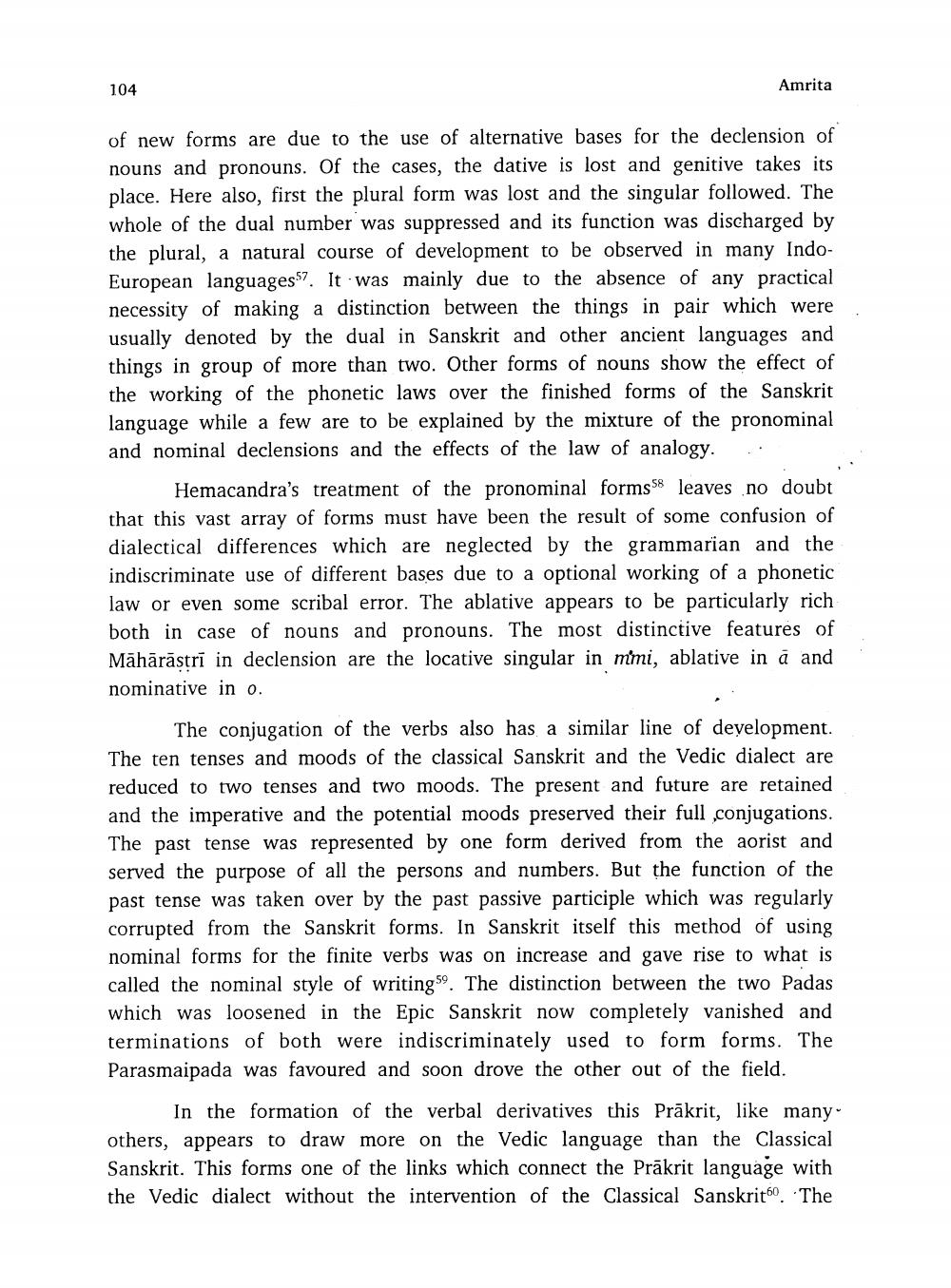________________
104
Amrita
of new forms are due to the use of alternative bases for the declension of nouns and pronouns. Of the cases, the dative is lost and genitive takes its place. Here also, first the plural form was lost and the singular followed. The whole of the dual number was suppressed and its function was discharged by the plural, a natural course of development to be observed in many IndoEuropean languages57. It was mainly due to the absence of any practical necessity of making a distinction between the things in pair which were usually denoted by the dual in Sanskrit and other ancient languages and things in group of more than two. Other forms of nouns show the effect of the working of the phonetic laws over the finished forms of the Sanskrit language while a few are to be explained by the mixture of the pronominal and nominal declensions and the effects of the law of analogy.
Hemacandra's treatment of the pronominal forms leaves no doubt that this vast array of forms must have been the result of some confusion of dialectical differences which are neglected by the grammarian and the indiscriminate use of different bases due to a optional working of a phonetic law or even some scribal error. The ablative appears to be particularly rich both in case of nouns and pronouns. The most distinctive features of Māhārāstrī in declension are the locative singular in mimi, ablative in a and nominative in o.
The conjugation of the verbs also has a similar line of development. The ten tenses and moods of the classical Sanskrit and the Vedic dialect are reduced to two tenses and two moods. The present and future are retained and the imperative and the potential moods preserved their full ,conjugations. The past tense was represented by one form derived from the aorist and served the purpose of all the persons and numbers. But the function of the past tense was taken over by the past passive participle which was regularly corrupted from the Sanskrit forms. In Sanskrit itself this method of using nominal forms for the finite verbs was on increase and gave rise to what is called the nominal style of writing59. The distinction between the two Padas which was loosened in the Epic Sanskrit now completely vanished and terminations of both were indiscriminately used to form forms. The Parasmaipada was favoured and soon drove the other out of the field.
In the formation of the verbal derivatives this Prākrit, like many. others, appears to draw more on the Vedic language than the Classical Sanskrit. This forms one of the links which connect the Prākrit language with the Vedic dialect without the intervention of the Classical Sanskrit60. The




